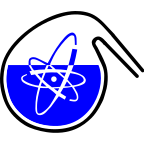Speaker
Description
Ground water pollution by long living radionuclides can cause their introduction into subsurface environment and drinking water sources. Such actinides as uranium, neptunium, plutonium, americium and technetium as fission product are ones of the most important radionuclides in radioecological management because of their toxicity and long living. Their migration ability in environment depends on variety of factors namely redox conditions, presence of dissolved oxygen, ground water content and etc. Radionuclide contamination often is coupled with high concentrations of nitrates, sulphates and dissolved organic compounds, which in their turn can cause the development of indigenous microflora which uses such compounds in its biochemical processes. Iron containing minerals are considered to be important components for radionuclide sorption and reduction. Biochemical cycle of iron is known to be the one of the most common and accessible in subsurface environment. Bacteria are able to consume avaible iron from iron-containing minerals with changing their structure, surface area, oxidation state of iron and therefore their sorption properties.
The aim of this work is to estimate the role of microbial treatment (including dissolution of initial minerals and precipitating biogenic iron-containing phases) on sorption properties of aquifer grounds in according to technetium, uranium, neptunium, plutonium and americium.
Pyrite, siderite, gematite and biotite were treated by natural microbial community collected from boreholes located on SCC site (Tomsk region) near deep underground LRW repository of injection type aquifer horizonts from the depth 300-400 meters contaminated by nitrates, sulphates and uranium. Biogenic depend changes of minerals were studied. Changes in sorption properties of biogenic treated samples were estimated as well.
Modeling was performed using PHREEQC code and llnl.dat data base.
The work was supported by the Russian Science Foundation, project No. 17-17-01212.

